 |
| October 08, 2019 | Volume 15 Issue 38 |
Designfax weekly eMagazine
Archives
Partners
Manufacturing Center
Product Spotlight
Modern Applications News
Metalworking Ideas For
Today's Job Shops
Tooling and Production
Strategies for large
metalworking plants
World's most powerful four-cylinder turbo engine ekes out even more power to 416 hp
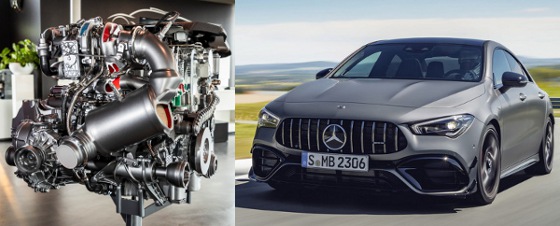
The M 139 engine is the powerplant behind the new Mercedes-AMG CLA 45 coupe.
The new Mercedes-AMG 2.0-liter M 139 engine, featured in the 2020 Mercedes-AMG CLA 45, is the world's most powerful turbocharged four-cylinder engine in series production -- and it's full of tweaked technology and entirely assembled by hand. It's produced on an innovative production line in Affalterbach, Germany, using a "One Man, One Engine" principle that's updated for industry 4.0. Every engine even bears the signature of its single builder.
The four-cylinder engine is available in two output versions for the compact models of Mercedes-AMG: 416 hp for the S-model and 382 hp in the base version.
Apart from its performance figures, the new engine impresses with its immediate response. The torque curve was carefully balanced with "torque shaping" -- the peak torque of 369 lb-ft (354 lb-ft for the base version) is available in a range of 5,000 to 5,250 rpm (4,750 to 5,000 rpm in the base version).
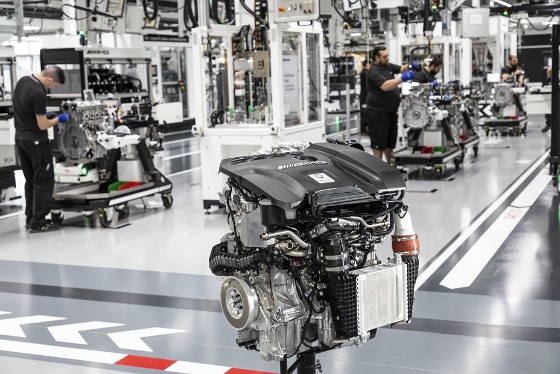
With this configuration, the AMG engineers have achieved a power delivery similar to that of a naturally aspirated engine. The engine developers were also able to create a dynamically increasing torque curve in the lower engine speed range, thereby improving agility. The increasing torque at higher rpm makes the engine more "free-revving." The high maximum engine speed (up to 7,200 rpm) classifies the M 139 as a true sports engine.
Also impressive is that the M 139 has exceeded its predecessor most powerful engine, the M 133, by 40 hp. That's a considerable amount of new horsepower to eke out. How did the engine designers at Daimler/Mercedes do it?
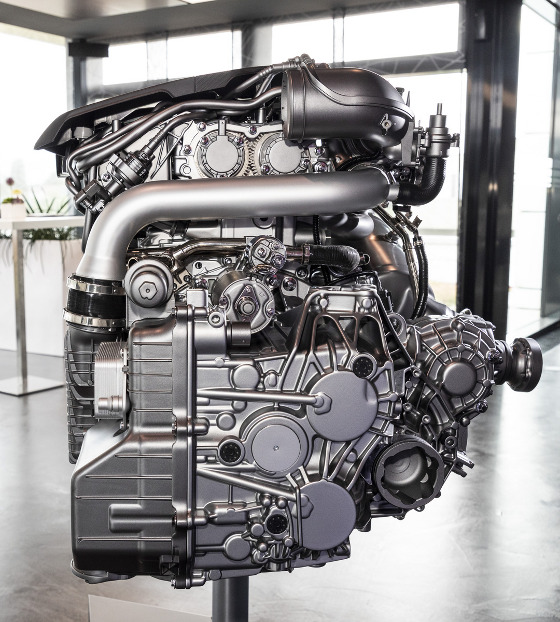
The new engine excels with numerous intelligent design features. Compared to the transversely installed M 260 four-cylinder in the "35" models or the preceding M 133 engine, the new Mercedes-AMG M 139 is rotated around its vertical axis by 180 degrees. This means that the turbocharger and the exhaust manifold are positioned at the rear, on the side of the firewall when viewed from behind. The intake system is positioned at the front. This configuration allows the flattest possible and aerodynamically advantageous front section design. Furthermore, the new arrangement allows for improved air ducts with shorter distances and fewer diversions -- both on the intake and exhaust side.
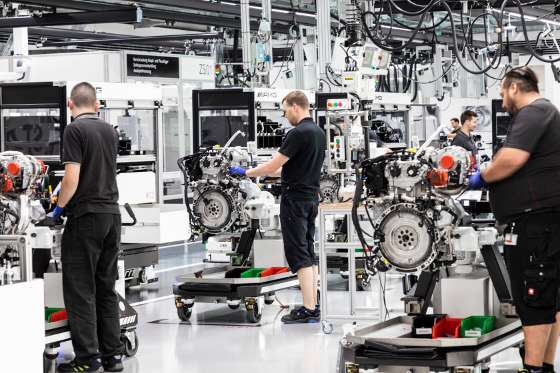
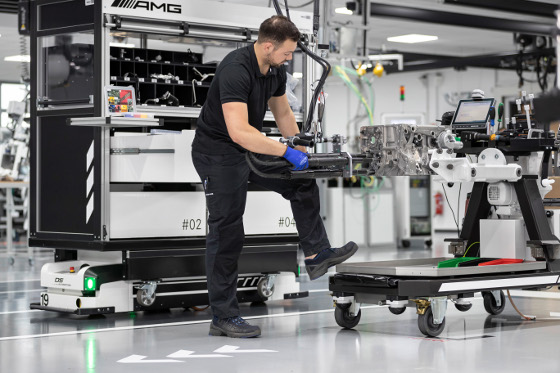
Roller bearings
The new twinscroll turbocharger combines optimum responsiveness at low engine speeds with high power in the upper rpm range. In addition to this, the turbine housing is divided into two flow passages that run parallel to one another. Together with the divided ducts in the exhaust manifold, this makes it possible to feed the exhaust flow to the turbine separately. The aim is to prevent the individual cylinders from influencing each other negatively during load cycles, and to improve the gas cycle. The result is higher torque at lower engine speeds, and extremely quick responsiveness.
Also, the shafts of the compressor and turbine have roller bearings for the first time, similar to the top output variant of the AMG 4.0-liter V8 engine in the AMG GT 4-door Coupe. Mercedes says the roller bearings reduce mechanical friction within the turbocharger to a minimum. The charger therefore responds more readily and reaches its maximum speed of up to 169,000 rpm more rapidly.
Cylinder liners coated with NANOSLIDE
To reduce friction between the pistons and cylinders, the linings are coated using patented NANOSLIDE technology. This gives the linings a mirror-like surface for minimal friction and is twice as hard as conventional grey cast-iron liners, making them much more durable. NANOSLIDE was developed by Daimler AG, and is protected by more than 90 patent families and more than 40 patents. The coating was first used for AMG's M 156 engine and can also be found in the Formula 1 engine of Mercedes-AMG Petronas Motorsport.
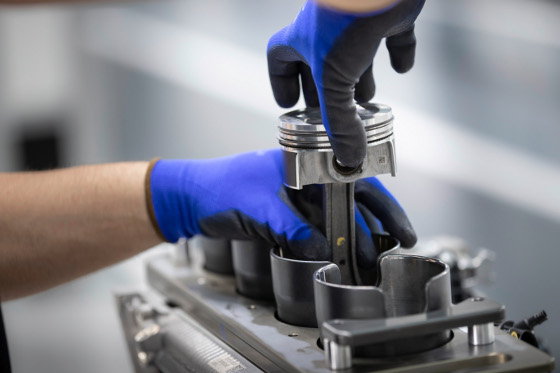
Electronic charge pressure control
With a maximum charge pressure of 2.1 bar (1.9 bar in the base version), the 2.0-liter turbo engine is also a top performer in this respect. The electronically controlled wastegate (exhaust relief valve) allows the charge pressure to be controlled even more precisely and flexibly while optimizing responsiveness, especially when accelerating from partial load. Numerous parameters are taken into account in this process.
The main input signals for the wastegate control unit are the charge pressure, throttle flap position, and the knocking tendency. The modifying signals include the intake air temperature, engine temperature, engine speed, and atmospheric pressure. This also makes temporary boosting of the charge pressure (overboost) possible under acceleration.
Fresh air is used in addition to oil and water to cool the turbocharger. This is directed specifically to the charger from the radiator grille, via the engine cover designed as an air deflector and ducts beneath the hood.
Mercedes says this concept is based on the principles and experience gained with the cooling for the internally mounted turbochargers of the current AMG 4.0-liter V8 engines, starting with the AMG GT in 2014. In addition, the turbine housing incorporates integral insulation.
Crankcase
The all-aluminum crankcase is a chill-cast unit, which excels with outstanding material properties. In this process, the molten aluminum is poured into the metallic mold. Thanks to its good thermal conductivity, the water-cooled mold allows rapid cooling and solidification of the melt. The result is a fine-grained, dense structure that guarantees very high strength. Complex interior geometries can be realized with the help of enclosed sand cores.
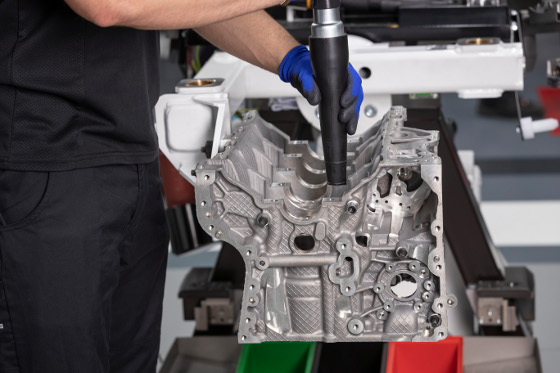
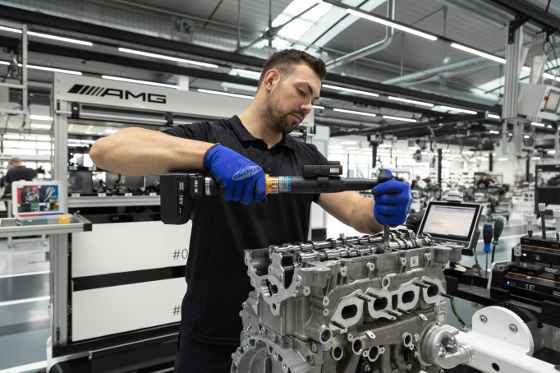
The closed-deck construction, a design from motor racing, ensures outstanding rigidity with low weight, and allows peak combustion pressures up to 160 bar. The areas around the cylinders are mostly solid; only smaller ducts for the coolant and engine oil penetrate the cover plate. The crank assembly with a lightweight, forged steel crankshaft and forged aluminum pistons with optimized piston rings combines low friction with high strength. The maximum engine speed is 7,200 rpm, and peak output is developed at 6,750 rpm. The sump features baffle plates so that despite the larger sump, and even under high lateral acceleration forces, there is always sufficient engine oil to lubricate all the relevant components.
Fuel injection -- the best of both worlds
Turbocharging and direct injection with a spray-guided combustion process not only allows for a high power yield, but also improves thermodynamic efficiency and therefore reduces both fuel consumption and exhaust emissions.
For the first time, the new high-performance four-cylinder has two-stage fuel injection. In the first stage, the particularly fast and precisely operating piezo injectors supply fuel to the combustion chambers at a pressure up to 200 bar. This is a multiple process at times, and is controlled by the engine management system as required.
In the second stage, there is additional intake manifold injection using solenoid valves. This is needed to achieve the engine's high specific output. The electronically controlled fuel supply has an operating pressure of 6.7 bar.
A sophisticated cooling system increases power
The high output requires an intelligently conceived cooling system. An additional radiator in the wheel arch supplements the large unit in the front level of the main module. A low-temperature circuit is also used for air/water intercooling. Together with the intercooler connected in series, a high-performance electric pump assists the coolant flow through the radiators. This provides for ideal cooling of the highly compressed charge air, thereby contributing to optimal engine performance.
Transmission oil cooling is integrated into the engine's coolant circuit, and is assisted by a heat exchanger mounted directly on the transmission. The engine control unit is mounted on the air filter housing, where it is cooled by an airflow.
Advantages of an electric water pump
The demand-controlled, electric high-performance water pump operates independently of the engine speed. Late activation during warm-up means that the engine block warms up more rapidly, with a positive effect on friction, consumption, and emissions. The pump can also be switched on or off as required when driving under less power or at low engine speeds. Furthermore, the electric water pump ensures the full engine output and optimum heat dissipation over the entire engine speed range. It also protects against thermal damage when idling in very high ambient temperatures.
Functions such as alternator management, the ECO start/stop function with fast restarting, the gliding function, and a gas particulate filter are also part of the technology package for the new AMG four-cylinder.
How the new assembly process makes work easier and improves efficiency
The assembly technicians may follow the "One Man, One Engine" principle, but they have a completely new, digitally supported process and logistical organization to help them along the way.
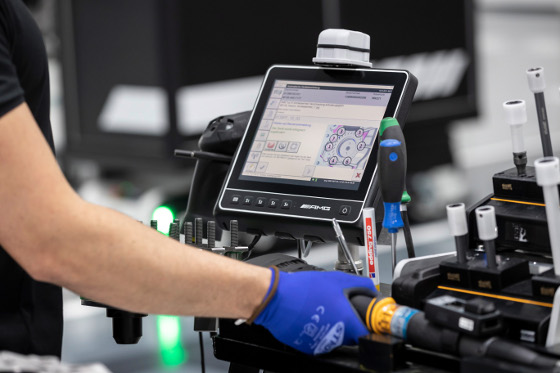
The employees are assisted in their work by digital tools. The focus is on the use of intelligent, flexible technology. The key element in this modern production process is a combination of highly flexible line assembly and preconfigured shopping carts using driverless transport systems. Sustainability was also a fundamental part of the planning for the new M 139 production line. Production uses renewable energy sources and considerably reduces CO2 emissions, water consumption, and waste.
The M 139 assembly cart was developed with the employees working as a team. It has its own, independent power supply, so it needs no power cables. This provides a lot of freedom for technicians and extra room to work. All the necessary operating fluids and tools are ergonomically arranged on and around the cart, making work easier, minimizing distances, and improving efficiency. The integrated tablet PC assists each employee with precise, clearly formulated working instructions. Manuals and guidelines are a thing of the past -- manufacturing is now paperless.
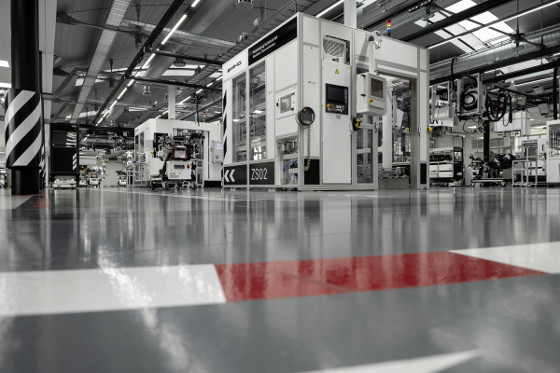
The new cordless screwdrivers are immediately at hand. They no longer need to be grabbed from overhead at each station, where they used to be suspended as wired tools. Employees refer to their new workplace as "blue sky," because there are no longer any power cables hanging from the ceiling.
Each tool is connected to the WLAN of the engine assembly shop. Torque settings for the relevant assembly stage are automated by indoor tracking. All completed tasks are digitally recorded, guaranteeing optimal quality assurance, reproducibility, and transparency.
Each assembly technician is followed by a driverless transport system. Its shopping cart has precisely the components needed to complete the engine being assembled.
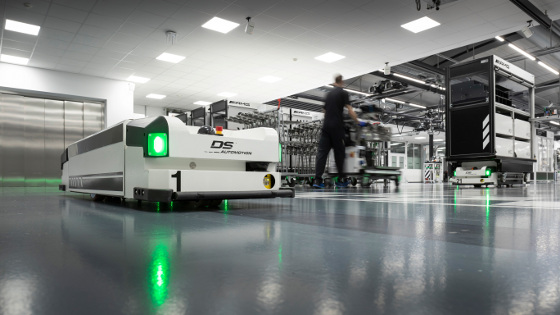
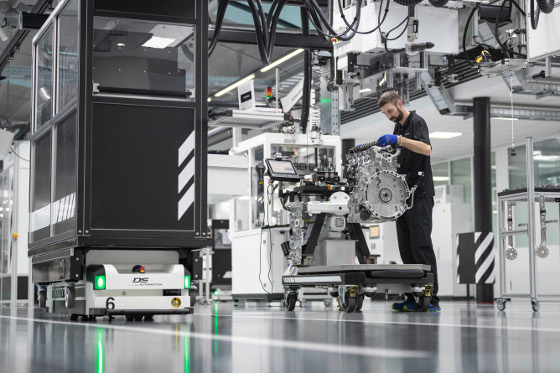
The transport systems are loaded up at the Mercedes-AMG logistical center in Marbach, and delivered to the production line on a "just in sequence" basis. Indoor tracking via WLAN also carries out autonomous control. All components are digitally tracked. The assembly and transport carts are designed in a black-and-white Mercedes-AMG look and carry slogans such as "START YOUR ENGINE" or "AMG PERFORMANCE INSIDE."
Assembly efficiency has been further enhanced by reducing the number of test stations. This is made possible by grouping several individual stations into three central stations: Drag torque test, leakage test for oil/coolant and fuel systems, as well as for complete engine water jacket. All parameters and measured values are digitally recorded and stored so that the assembly of each individual engine can be tracked.
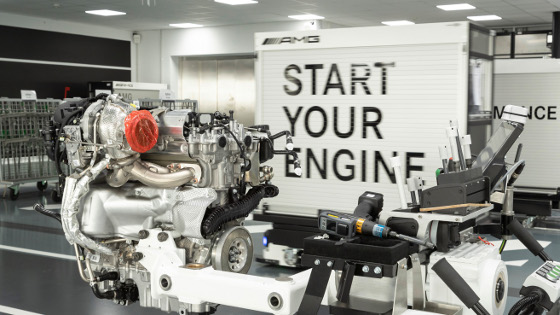
And last, each assembly tech gets to sign their singular creation. There's always an extra bit riding on something when you have to put your own name on it.
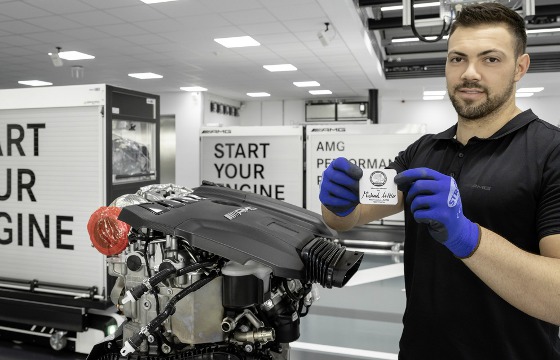
Source: Daimler AG/Mercedes
Published October 2019
Rate this article
View our terms of use and privacy policy
